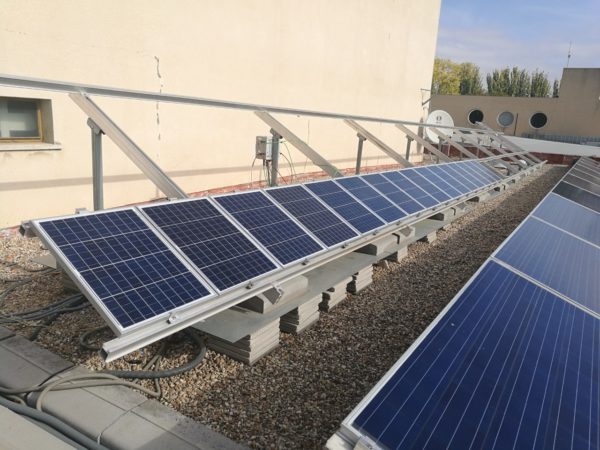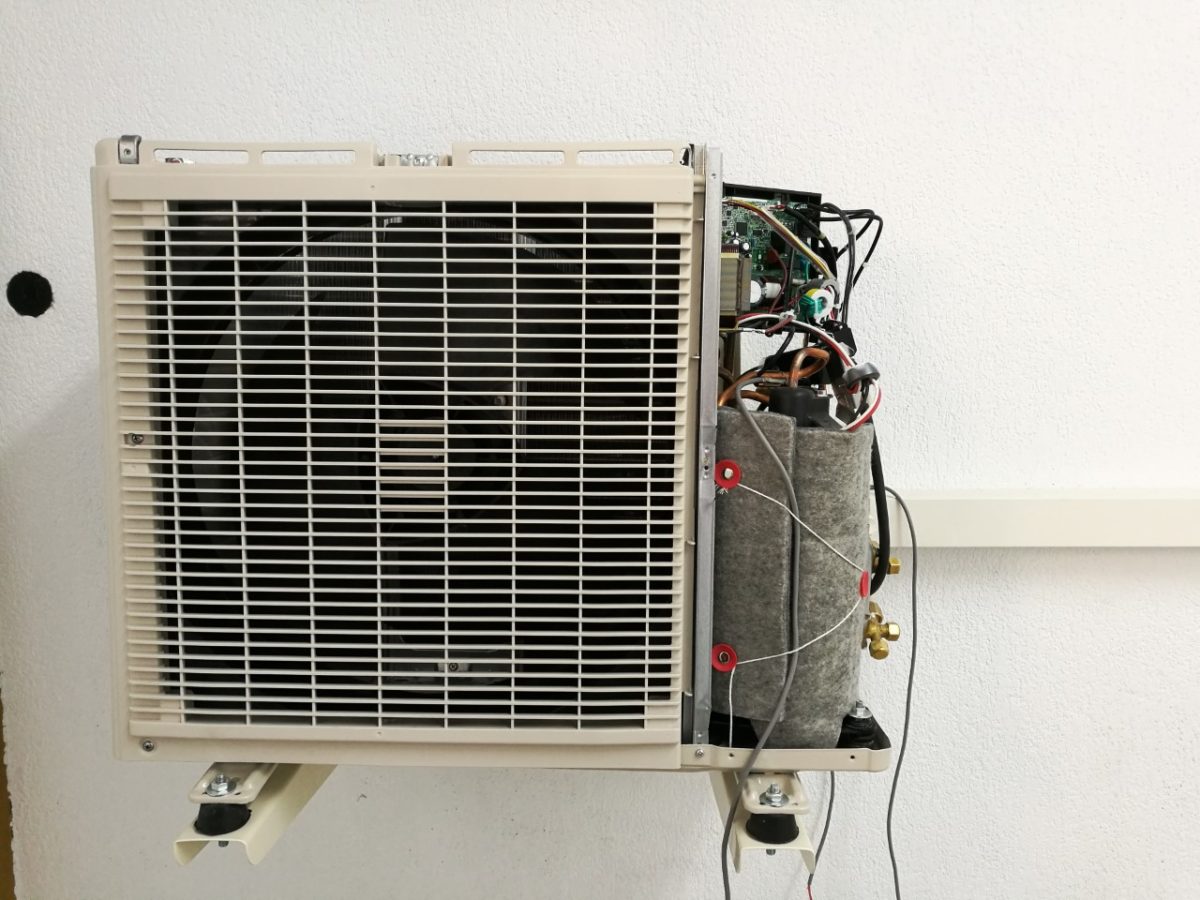Solar-powered heat pumps have attracted a lot of attention in recent years, promising low carbon heating through a wide range of applications. Their technical and financial viability, however, remains subject to different views, with some claiming that payback time is still too long and others saying their performance is still behind the required level to ensure that heating or cooling are efficiently provided to a household or a building.
According to Celena Lorenzo, a researcher at Spain's Technical University of Madrid, PV-powered heat pumps (PVHPs) are set to become a fully developed technology in the next few years and a mainstream solution by the end of the decade. “I believe the barriers are mainly economic and are related to initial investment for the PV generator,” she told pv magazine. “But the performance of these systems is already good enough.”
Celena also explained that the main technical problem with PVHPs is the storage requirement for certain applications. “For example, if the system needs to be used at night time,” she stated, noting that photovoltaic-thermal systems could be better suited for heating applications, although they will probably remain inefficient for cooling. “Heat pumps powered by PV alone, instead, are efficient for both cooling and heating and are more reliable as they require fewer components and have less possibility of failure,” she explained, adding that resorting to PV alone may also help reduce the upfront cost significantly, as solar panel prices are constantly decreasing.

Image: Technical University of Madrid
The payback period of a solar-powered heat pump, so far, is estimated by Lorenzo at around 10 years for industrial applications and a bit longer for residential installations. “I believe the cooling market is more promising because there is a better match between PV generation and thermal demand,” he further explained. “On the other hand, warmer hours are usually sunnier and less storage is needed.”
In a study that dates back to October 2019, Celena and another Spanish scientist, L. Navarte, analyzed different solutions for PVHP systems that were designed or tested in previous works and have described a series of existing and new key performance indicators (KPIs), which are not aimed exclusively at evaluating the quality of heat pump or the PV generator, but also the quality of their integration.
In the paper, the two researchers specified that the influence of local climate conditions may limit the use of conventional KPIs. “The same high-quality PVHP will have a lower value of Performance Ratio (PR) in Spain than in Denmark just because the mean ambient temperature in Spain is higher, leading to higher thermal losses in the PV system,” the study reads. “These losses are not related to the quality of the system but to the operating climatic conditions in the location where the PVHP has been installed.”
The PR is not the only indicator affected by local conditions. Three of the mentioned indicators – the Seasonal Performance Factor (SPF), the Coefficient of Performance (COP), and the Energy Efficiency Ratio (EER), are also defined as highly dependent on the ambient temperature. “This dependence is not linear and is not the same for different technologies and models of HPs,” the scientists explained. “This makes it very difficult to compare the performance results of studies carried out in different climatic regions.”
Other indicators are the Self-Consumption Ratio (SCR) and the PV Solar Fraction (SFPV). The latter represents the share of the total electricity consumed by the heat pump that has been generated by the PV installation and, in combination with the former, is crucial for assessing the quality of the connection between the heat pump and the solar array.
The researchers propose a series of new indicators which they claim overcome the above-mentioned limitations. The Performance Ratio at Standard Test Conditions (PR25), which they defined as having the same meaning as the PR but eliminating the thermal losses at different ambient temperatures, and the Performance Ratio measured with a reference PV module at Standard Test Conditions (PRref,25), which is described as able to reduce the effect of different climatic conditions and time spans, as it considers irradiance and the cell temperature with a reference PV module in the same plane of the generator.
Furthermore, they propose a ‘Seasonal Performance Factor for PVHP systems' (SPFPV-HP), which combines the traditional SPF with the PR, SCR, and SFPV, and the Seasonal Performance Factor for PV-HP systems at Standard Test Conditions (SPFPV-HP,ref,25). The last indicator is independent of the climatic conditions and time span, but only regarding the PV generator. “It is calculated from the PRref,25 and can take a value between once and twice the traditional SPF,” Lorenzo explained.
This content is protected by copyright and may not be reused. If you want to cooperate with us and would like to reuse some of our content, please contact: editors@pv-magazine.com.




Not certain if this article covers Heating and Cooling simultaneously or Heating in Winter and Cooling in Summer only.
The “Mother of All” Applications is use of BOTH COOLING and HEAT simultaneously. Also if Solar Power is utilized there will be Energy Storage required (in Electrical or Thermal form) for 27/7 use.
Some Fundamentals maybe of use here. Heat Pumps typically have a COP (Coefficient Of Performance… Energy Out/Energy In ) of 4.5 for Heating and 3.5 for Cooling and can be increased to 4.5/5.5 by using Optimally Designed Equipment.
In a Dual Application, where the Heat and Cooling are BOTH used, the resultant COP will be as high as 9-10.. something that cannot be achieved elsewhere.
The Challenge is to find these “Mother of All” Dual Application(s) and Integrate with “Mother of-All” Dual Use Heat Pumps.
Realistically, in this Dual Application/Design it should be possible to obtain an average COP of 8.0 or so… which is quite impressive…. for every 1 KW of Electricity Input you get 8KW of Hot/Cold Water Out.
This will require some careful Selection and Sizing of the Heat Pumps with Thermal Storage for Hot/Chilled Water to meet the Daily / Seasonal varying Hot/Cold Water Requirements.
Anyway one looks at it, a COP of 8.0 is something that cannot or should not be brushed aside easily.
In this respect, this work done as per the above Report is timely and commendable in a Zero Pollution World using Solar Energy only.